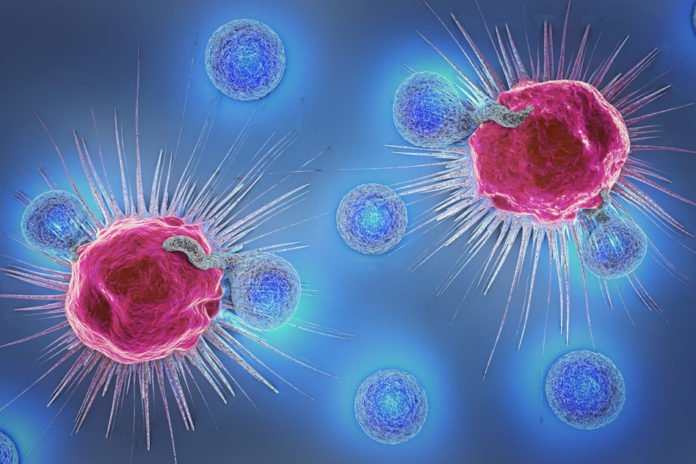MIT scientists have developed new sensors that could help them analyze cancer cells and to check whether the cells are responding to a particular type of chemotherapy drug.
The sensors work by detect hydrogen peroxide inside human cells. The sensors could likewise be adjusted to screen individual patients’ tumors to foresee whether such medications would be successful against them.
Hadley Sikes, an associate professor of chemical engineering at MIT said, “The same therapy isn’t going to work against all tumors. Currently, there’s a real dearth of quantitative, chemically specific tools to be able to measure the changes that occur in tumor cells versus normal cells in response to drug treatment.”
Existing hydrogen peroxide sensors depend on proteins called transcription factors, taken from organisms and built to fluoresce when they respond with hydrogen peroxide. Scientists endeavored to utilize these in human cells however found that they were not delicate in the scope of hydrogen peroxide they were attempting to identify, which drove them to look for human proteins that could play out the assignment.
Scientists identified an enzyme called peroxiredoxin that dominates most human cells’ reactions with the molecule. One of this enzyme’s many functions is sensing changes in hydrogen peroxide levels.
Scientists then changed the protein by adding two fluorescent particles to it — a green fluorescent protein toward one side and a red fluorescent protein at the opposite end. At the point when the sensor responds with hydrogen peroxide, its shape changes, bringing the two fluorescent proteins closer together.
The specialists can distinguish whether this move has happened by sparkling green light onto the cells: If no hydrogen peroxide has been identified, the gleam stays green; if hydrogen peroxide is available, the sensor shines red.
While experimenting with the sensor on two different types of cancer cells, scientists found that precisely disclosed that hydrogen peroxide levels were unchanged in the resistant cells but went up in the susceptible cells.
Sikes said, “There are two major uses for this sensor. One is to screen libraries of existing drugs, or compounds that could potentially be used as drugs, to determine if they have the desired effect of increasing hydrogen peroxide concentration in cancer cells. Another potential use is to screen patients before they receive such drugs, to see if the drugs will be successful against each patient’s tumor.”
She said, “You have to know which cancer drugs work in this way, and then which tumors are going to respond. Those are two separate but related problems that both need to be solved for this approach to have a practical impact in the clinic.”
The paper is published in the journal Nature Communications.
